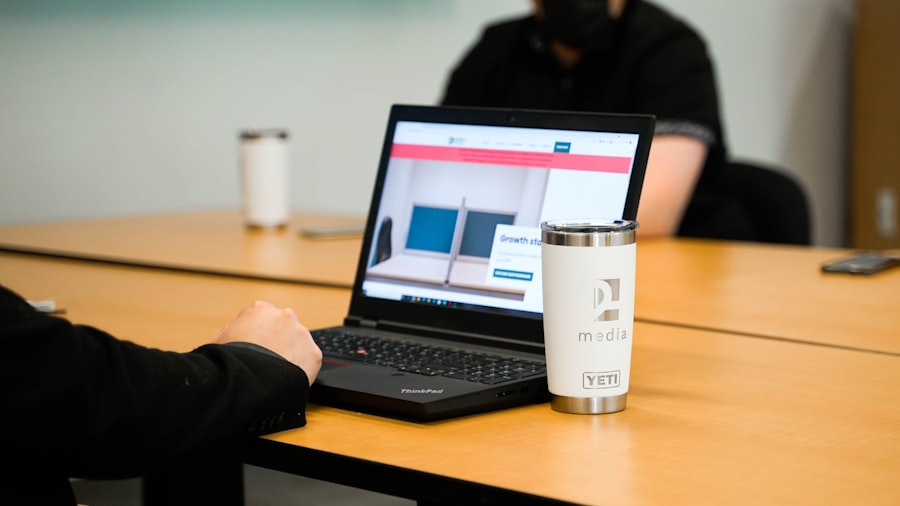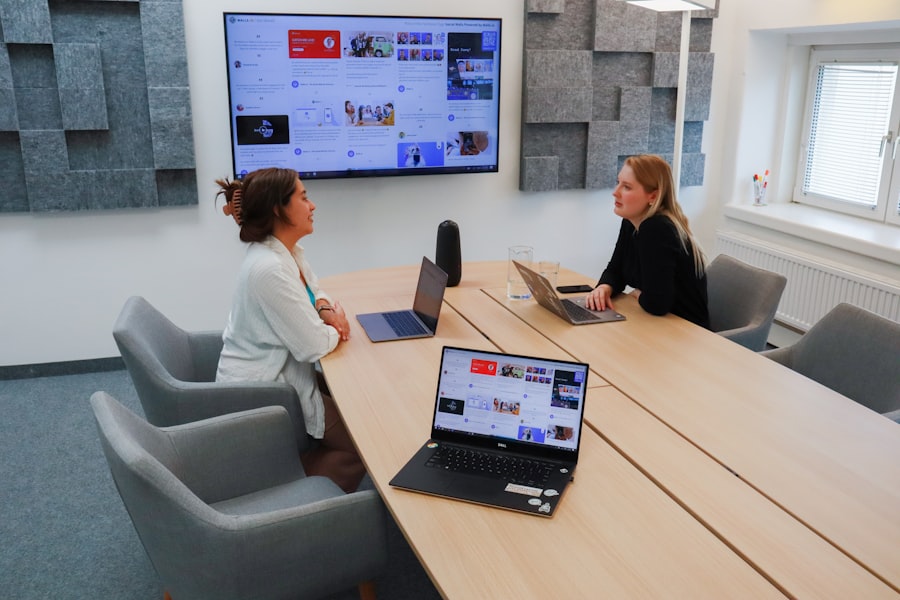Effective workplace communication is essential for organizational success. It forms the basis of a positive work environment and is crucial for building strong relationships among colleagues. Clear, open, and honest communication fosters trust and teamwork, leading to increased productivity and employee satisfaction.
It ensures alignment among team members, reducing misunderstandings and conflicts. Effective communication facilitates the smooth flow of information, which is vital for decision-making and problem-solving within the organization. Furthermore, effective workplace communication is key to providing clear expectations and goals for employees.
When employees understand their roles, responsibilities, and expectations, they are more likely to perform optimally. Communication is also essential for creating a positive company culture and promoting employee engagement. Employees who feel heard and valued are typically more motivated and committed to their work.
In summary, effective workplace communication is crucial for creating a harmonious and productive work environment.
Key Takeaways
- Effective workplace communication is crucial for productivity, teamwork, and employee satisfaction.
- Active listening techniques, such as maintaining eye contact and asking clarifying questions, can improve understanding and rapport.
- Clear and concise communication helps avoid misunderstandings and ensures that messages are delivered effectively.
- Utilizing technology, such as email, video conferencing, and project management tools, can enhance communication efficiency.
- Building trust and openness in communication fosters a positive work environment and encourages collaboration and innovation.
- Resolving conflict through communication involves active listening, empathy, and finding mutually beneficial solutions.
- Providing constructive feedback, including specific examples and actionable suggestions, can help employees grow and improve performance.
Active Listening Techniques
Nonverbal Cues for Active Listening
Maintaining eye contact with the speaker is a powerful technique for active listening, as it conveys engagement and attentiveness. Additionally, using nonverbal cues such as nodding and verbal affirmations like “I see” or “I understand” can demonstrate that you are actively listening and encourage the speaker to continue sharing their thoughts.
Clarifying Questions and Paraphrasing
Asking clarifying questions is another vital technique for active listening, as it shows interest in understanding the speaker’s perspective and ensures a clear comprehension of the information being conveyed. Furthermore, paraphrasing what the speaker has said can demonstrate active engagement in the conversation and help clarify any misunderstandings.
Building Strong Relationships through Active Listening
By incorporating active listening techniques into your daily interactions, you can foster effective workplace communication and build strong relationships with your colleagues. By doing so, you can create a more productive, collaborative, and successful work environment.
Clear and Concise Communication

Clear and concise communication is vital for ensuring that messages are understood and interpreted correctly in the workplace. Using simple language and avoiding jargon can help to ensure that everyone understands the message being conveyed. Additionally, organizing thoughts before speaking or writing can help to ensure that the message is clear and to the point.
It is also important to be mindful of non-verbal communication, such as body language and tone of voice, as these can impact how a message is received. Furthermore, providing context and background information can help to ensure that the message is understood in the intended way. This can be particularly important when communicating complex or sensitive information.
Moreover, using visual aids such as charts or diagrams can help to convey information in a clear and concise manner. Overall, clear and concise communication is essential for avoiding misunderstandings and ensuring that messages are effectively communicated in the workplace.
Utilizing Technology for Communication
In today’s digital age, technology plays a crucial role in workplace communication. Email, instant messaging, video conferencing, and other digital tools have made it easier than ever to communicate with colleagues, regardless of their location. These tools can facilitate quick and efficient communication, allowing for the exchange of information in real-time.
Additionally, technology can help to streamline communication processes, such as scheduling meetings or sharing documents, making it easier for employees to collaborate and work together effectively. Moreover, technology can also be used to enhance the quality of communication in the workplace. For example, video conferencing can allow for face-to-face communication with remote colleagues, helping to build stronger relationships and promote a sense of teamwork.
Furthermore, project management tools can help to keep everyone on the same page and ensure that tasks are completed on time. Overall, utilizing technology for communication can help to improve efficiency and effectiveness in the workplace.
Building Trust and Openness in Communication
Building trust and openness in communication is essential for creating a positive work environment. When employees feel that they can trust their colleagues and superiors, they are more likely to communicate openly and honestly. This can lead to better problem-solving, increased collaboration, and a stronger sense of teamwork within the organization.
One way to build trust and openness in communication is to lead by example by being transparent and honest in your own communication with others. Additionally, creating opportunities for open dialogue and feedback can help to foster trust and openness in communication. This can include regular team meetings, one-on-one check-ins with employees, or anonymous feedback channels.
Furthermore, actively listening to employees’ concerns and addressing them in a timely manner can help to build trust and openness in communication. Overall, building trust and openness in communication is essential for creating a positive and productive work environment.
Resolving Conflict through Communication

Encouraging Open Dialogue
This approach helps ensure that all perspectives are heard and understood, leading to a more comprehensive resolution. By encouraging open dialogue, all parties involved can express their feelings and concerns, leading to a better understanding of the issue at hand.
Effective Communication Techniques
Using “I” statements instead of “you” statements can help avoid placing blame and instead focus on expressing feelings and concerns. Additionally, seeking common ground and finding mutually beneficial solutions can help resolve conflicts in a way that satisfies all parties involved.
Follow-up and Resolution
It is essential to follow up after a conflict has been resolved to ensure that the issue has been fully addressed and that all parties are satisfied with the outcome. This follow-up helps maintain a positive work environment and prevents similar conflicts from arising in the future.
Providing Constructive Feedback
Providing constructive feedback is an important aspect of effective workplace communication. Constructive feedback can help employees understand their strengths and areas for improvement, leading to personal and professional growth. When providing feedback, it is important to be specific about the behavior or performance being addressed and provide examples when possible.
This can help employees understand exactly what they are doing well or where they need to make improvements. Additionally, it is important to focus on the behavior or performance rather than making personal attacks. Using language that is non-judgmental and supportive can help employees feel more open to receiving feedback.
Furthermore, providing feedback in a timely manner can help employees make necessary adjustments before issues become more significant. It is also important to follow up on feedback given to ensure that progress is being made. Overall, providing constructive feedback is essential for helping employees grow and develop within the organization.
In conclusion, effective workplace communication is essential for creating a positive work environment and fostering strong relationships among colleagues. Active listening techniques, clear and concise communication, utilizing technology for communication, building trust and openness in communication, resolving conflict through communication, and providing constructive feedback are all crucial aspects of effective workplace communication. By prioritizing these aspects of communication, organizations can create a harmonious work environment where employees feel heard, valued, and motivated to perform at their best.
If you’re looking to improve workplace communication, you may also be interested in learning how to handle career setbacks and keep moving forward. This article from Careers Help provides valuable insights and strategies for overcoming obstacles in your career and continuing to progress towards your goals. It’s important to be able to effectively communicate with colleagues and supervisors, but it’s also crucial to have the resilience and determination to navigate challenges and setbacks in your professional life.
FAQs
What are some common communication challenges in the workplace?
Some common communication challenges in the workplace include misinterpretation of messages, lack of clarity, poor listening skills, cultural differences, and language barriers.
What are some strategies for improving workplace communication?
Some strategies for improving workplace communication include active listening, clear and concise messaging, regular feedback, open and honest communication, and utilizing various communication channels such as email, meetings, and instant messaging.
How can active listening improve workplace communication?
Active listening involves fully concentrating, understanding, responding, and remembering what is being said. This can improve workplace communication by ensuring that messages are accurately received and understood, leading to better collaboration and problem-solving.
How can cultural differences impact workplace communication?
Cultural differences can impact workplace communication by influencing communication styles, non-verbal cues, and language barriers. It is important for organizations to be aware of these differences and provide training and resources to bridge the communication gap.
What role does feedback play in improving workplace communication?
Feedback plays a crucial role in improving workplace communication by providing individuals with constructive criticism, recognition of their efforts, and opportunities for improvement. It helps in fostering a culture of open communication and continuous improvement.



